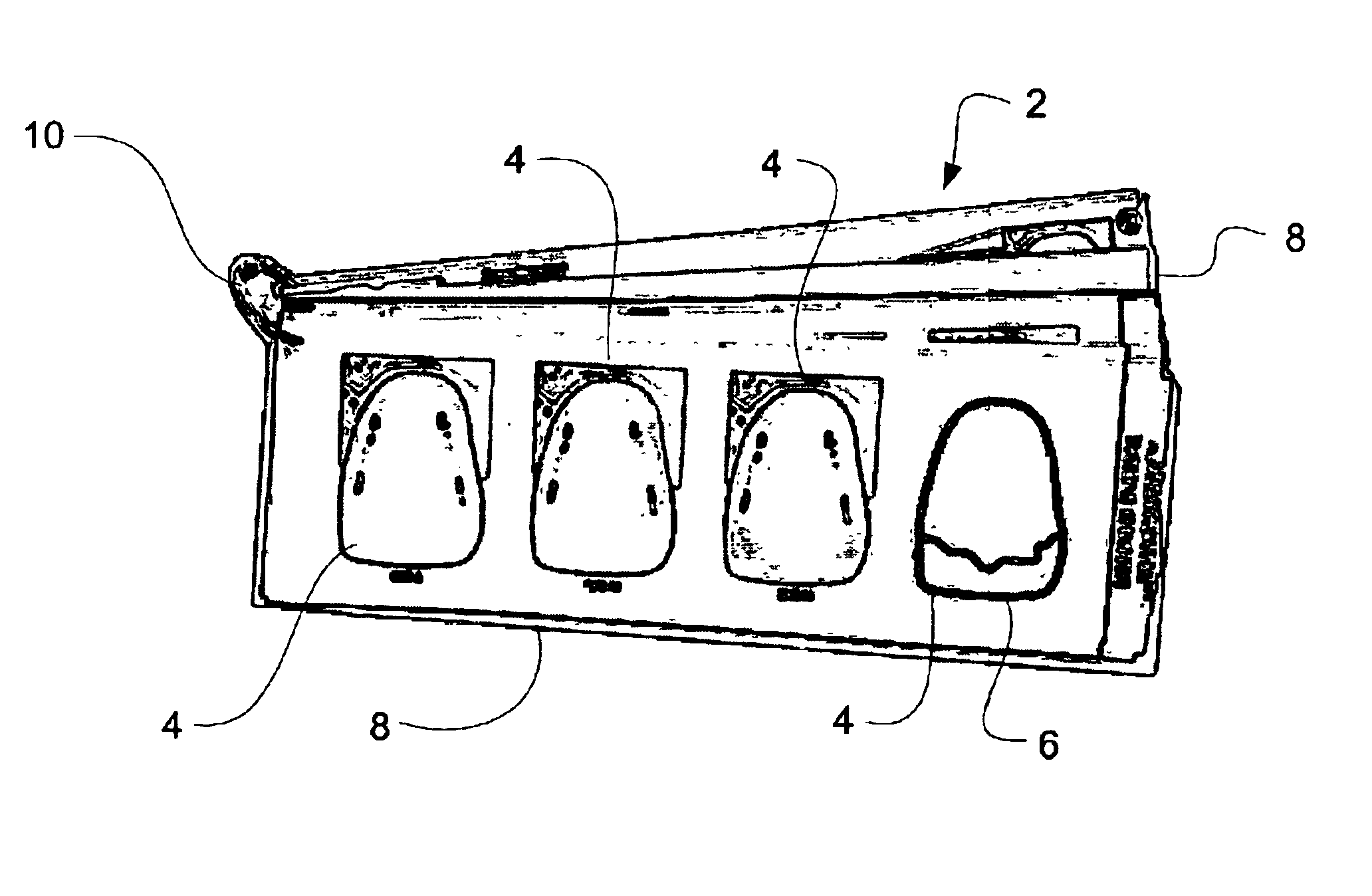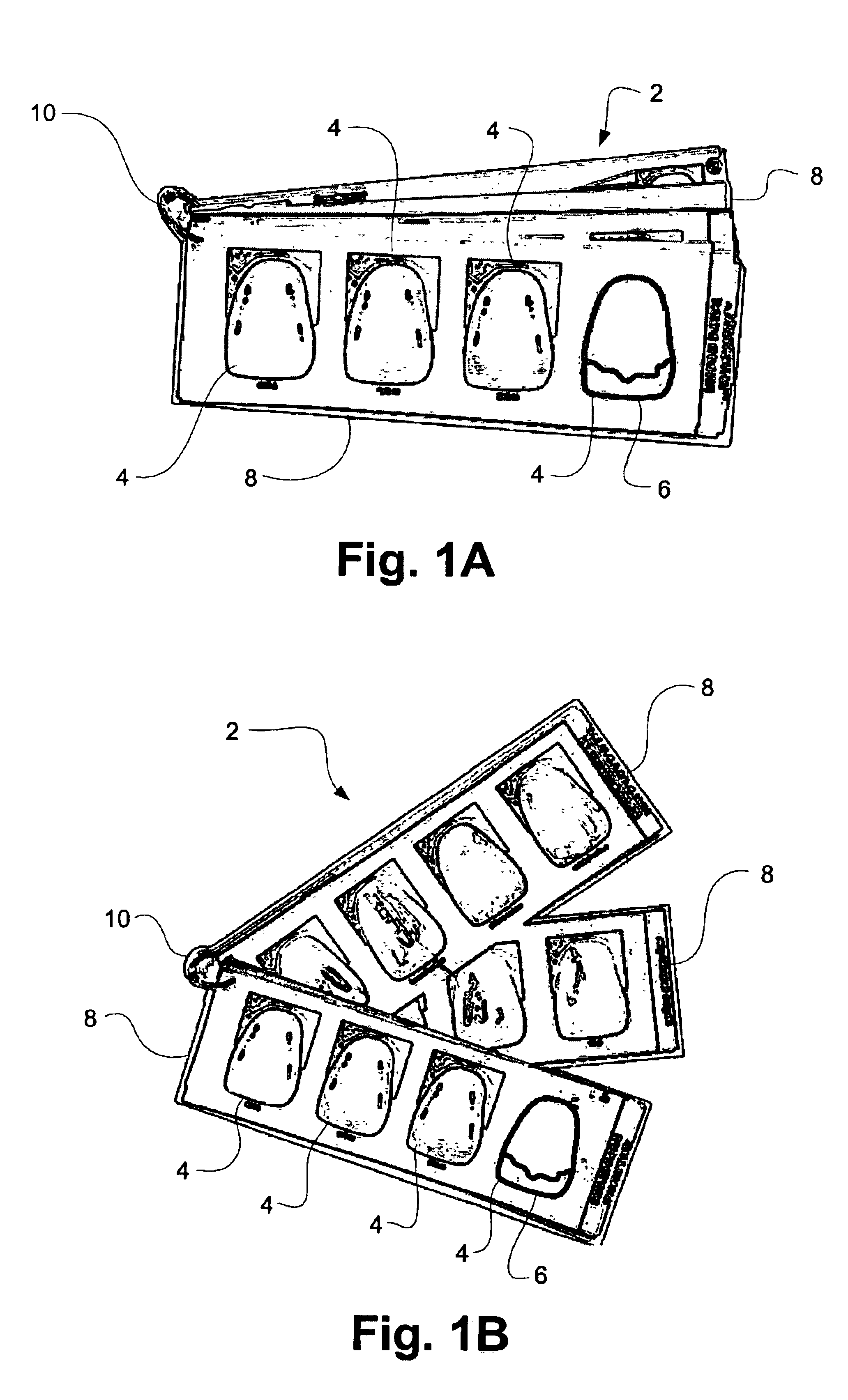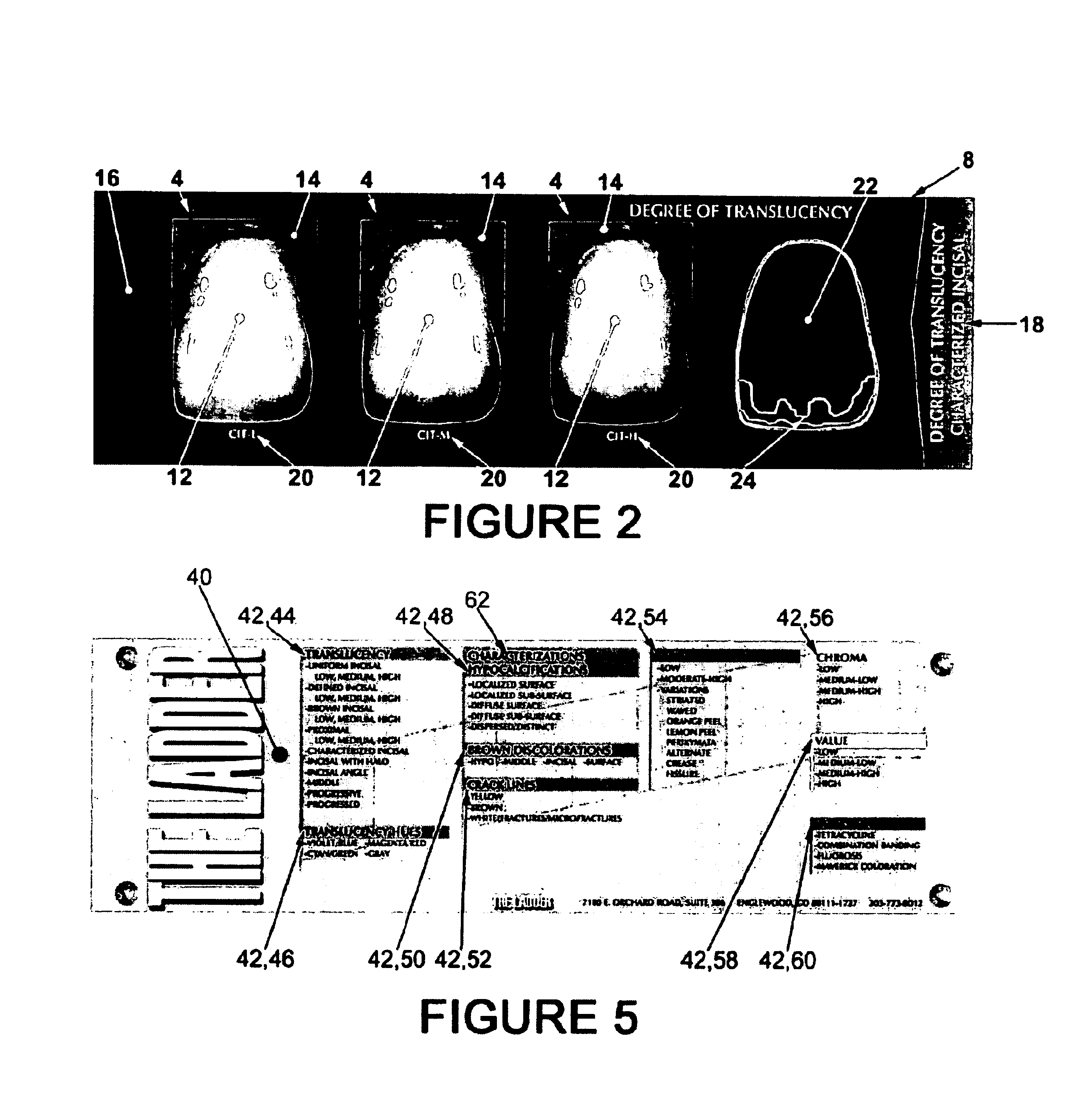Method and apparatus for communicating tooth characteristics and tooth restoration produced thereby
a technology of tooth characteristics and communication methods, applied in the field of methods and apparatus for communicating tooth characteristics and tooth restoration produced thereby, can solve the problems of increased time and equipment costs, inadequacies or misinterpretation of communication, and increased treatment time demands, so as to reduce the amount of subjectivity, facilitate communication, and reduce the amount of expertise
- Summary
- Abstract
- Description
- Claims
- Application Information
AI Technical Summary
Benefits of technology
Problems solved by technology
Method used
Image
Examples
Embodiment Construction
[0036]The present invention will now be described in detail with reference to various embodiments thereof, with some aspects of the invention being described in the accompanying drawings. Numerous specific details are set forth in order to provide a thorough understanding of the present invention. It will be apparent to those skilled in the art that the present invention may be practiced without some or all of the specific details, that operations may be rearranged, that some operations may be eliminated or performed in a different way, and that other changes may be made without departing from the spirit and scope of the present invention.
[0037]An exemplary embodiment of the present invention is referred to herein as a Laboratory and Dentist Digitally Enhanced Reference (LADDER). The LADDER is a pictorial reference guide displaying true photographic images of features of tooth appearance. The scope, intensity, coloration, contrast, and character of the features are combined to simpl...
PUM
 Login to View More
Login to View More Abstract
Description
Claims
Application Information
 Login to View More
Login to View More - R&D
- Intellectual Property
- Life Sciences
- Materials
- Tech Scout
- Unparalleled Data Quality
- Higher Quality Content
- 60% Fewer Hallucinations
Browse by: Latest US Patents, China's latest patents, Technical Efficacy Thesaurus, Application Domain, Technology Topic, Popular Technical Reports.
© 2025 PatSnap. All rights reserved.Legal|Privacy policy|Modern Slavery Act Transparency Statement|Sitemap|About US| Contact US: help@patsnap.com



